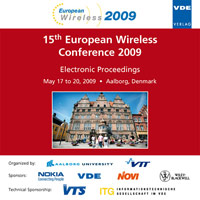Performance Analysis of Closed and Open Loop MIMO in LTE
Conference: European Wireless 2009 - 15th European Wireless Conference
05/17/2009 - 05/20/2009 at Aalborg, Denmark
Proceedings: European Wireless 2009
Pages: 6Language: englishTyp: PDF
Personal VDE Members are entitled to a 10% discount on this title
Authors:
Ball, Carsten F.; Müllner, Robert (Nokia Siemens Networks GmbH & Co. KG, Radio Access Division, St.-Martin-Str. 76, 81541 Munich, Germany)
Lienhart, Johann; Winkler, Hubert (Siemens AG, Programs and Systems Engineering, Autokaderstr. 29, 1210 Vienna, Austria)
Abstract:
This paper provides a detailed performance comparison between Closed Loop (CL) and Open Loop (OL) MIMO schemes for the upcoming OFDM based mobile broadband radio access technology 3GPP UTRA LTE. Based on system level simulation results, key performance indicators like cell throughput, user throughput and MIMO utilization have been evaluated for different system load conditions assuming 2x2 MIMO in a regular hexagonal cell deployment and in a real network scenario. A realistic dynamic MIMO switch between diversity and spatial multiplexing has been assumed, which is based on configurable CQI as well as rank filtering and decision thresholds. 3GPP compliant measurement granularity as well as appropriate measurement errors have been applied to both CQI and closed loop PMI reports. Besides dynamic MIMO switching, both MIMO 2x2 diversity and MIMO 2x2 spatial multiplexing scenarios have been investigated for the downlink direction highlighting the differences of the various MIMO transmission modes and their impacts on spectral efficiency and radio performance. It has been shown that ideal closed loop MIMO provides a 2 dB theoretical performance gain over open loop MIMO. Assuming practical limitations such as available granularity, delay and realistic PMI measurement errors, however, this gain significantly decreases below roughly 1 dB. Nevertheless MIMO proves to be an appropriate method to boost user throughput especially at low to medium system load up to a factor of 2. Moreover the dynamic MIMO switch proves to be very robust against variations of parameter settings.


